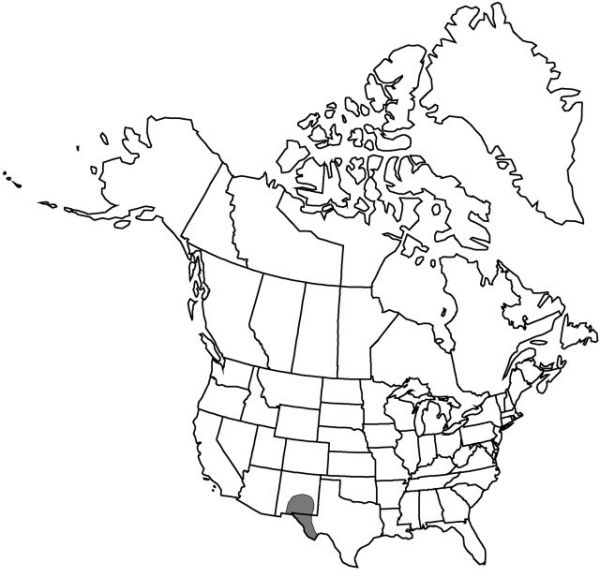Dasylirion leiophyllum
Proc. Amer. Philos. Soc. 50: 433, fig. 1911.
Plants typically large and robust, with small crowns; trunks to 1 m, erect or reclining. Leaves elongate, rigid; blade bright green, 90–110 × (1.5–) 2–3 cm wide above broadened base, usually smooth and shiny, glabrous, not waxy; prickles mostly retrorse. Inflorescences 2.5–5 m; stalk 3–5 cm diam. at base; branches mostly basal, erect, 4–10 cm; bracts lanceolate; fascicles of flowers condensed, 8–12 cm from base to tip; primary-axes 2–5 cm. Flowers with receptacles 0.2–0.4 mm; tepals whitish or greenish, 1.8–2 × 1 mm; style 0.2–0.3 mm; stigma lobes 0.3–0.4 mm; pedicel 2–2.4 mm in fruit. Capsules ellipsoid to obovoid, 6–7 × 4–4.5 mm; distal wing lobes 1.5–2 mm, rounded in cross-section, not indented.
Phenology: Flowering mainly Jun–Jul.
Habitat: Gravelly limestone and igneous slopes, bajadas, canyons, and arroyos of mountains
Elevation: 1200–1800 m
Distribution

N.Mex., Tex., Mexico (Chihuahua), Mexico (Coahuila)
Discussion
Dasylirion leiophyllum hybridizes with D. texanum in the area of overlap. Specimens with mixed prickle curvature have been treated as D. heteracanthum, but on the whole these resemble D. leiophyllum, and so D. heteracanthum is reduced to synonomy here.
Selected References
None.